While searching for a flexible and versatile solution for seed bed preparation, a breeder from Norfolk in the UK gave up tracks in favour of tyres, and opted for two Fendt 1050 Varios.

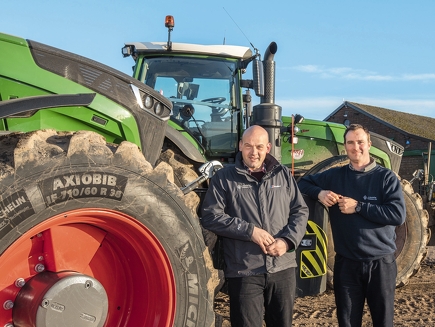
VarioGrip is the game changer!


VarioGrip is the game changer!


VarioGrip is the game changer!


VarioGrip is the game changer!
While searching for a flexible and versatile solution for seed bed preparation, a breeder from Norfolk in the UK gave up tracks in favour of tyres, and opted for two Fendt 1050 Varios.
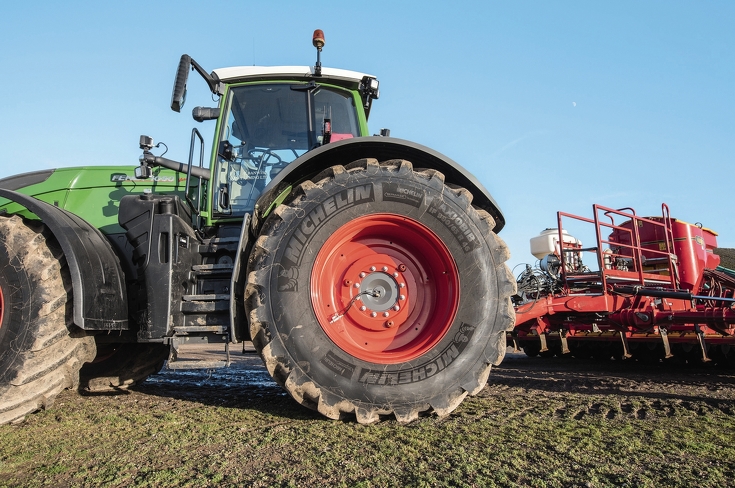
The performance and productivity of a track tractor must be compared with that of its equivalent with tyres under “ideal conditions”, but these conditions occur increasingly rarely. “I always look at what we can make better, and when we can do it. That means of course that we have to keep a close eye on logistics and efficiency,” says Michael Balls, arable manager on the “Albanwise Farming Hill” in Barton Bendish. “The track tractors have served their purpose. We ran an analysis though, which showed that we almost always need an additional tractor for work where we wouldn’t or can’t use track tractors, and this involves additional costs of course.” Four fulltime staff form the small Albanwise Farming Hill team, working an area of more than 2,430 hectares. Crops include oilseed rape, winter barley, summer barley, broad beans, rye, sugar beet, corn and peas on soil types which range from sandy to chalky and heavy clay loam.
Areas which were recently worked by six tractors, are now covered by just four. “We were using two Challenger track tractors and four John Deeres”, says Michael Balls. “A 400 HP MT 775 E and a 350 HP MT 765 D were used for tillage and drilling, whilst a John Deere 8310R, a 6190R and two 6150R did the rest of the work.” Searching for more power, lower costs, and better versatility, Michael Balls and his team looked at all their options to find a costeffective solution for their farm. “Most of our tillage is done by a 5.4 metre wide Simba SLD cultivator and a 6.6 m wide UniPress disc harrow. We also use rotary ploughs, but our processes are not set in stone”, says the farm manager with a smile. “We choose crops to suit the growing conditions, the soil types, and weather conditions.”
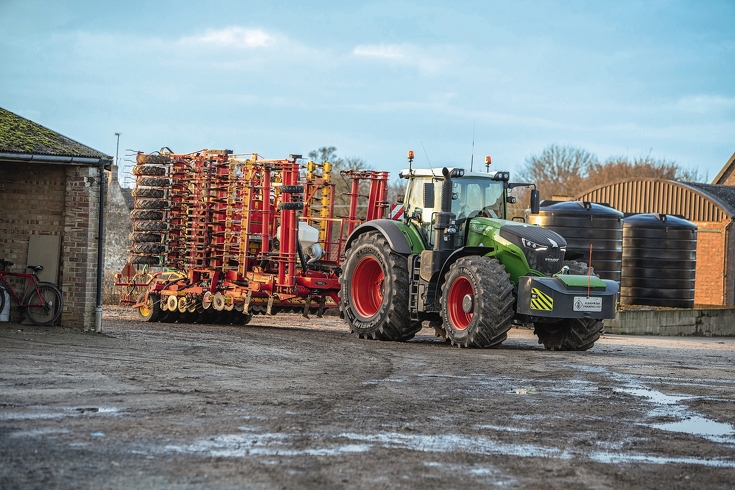
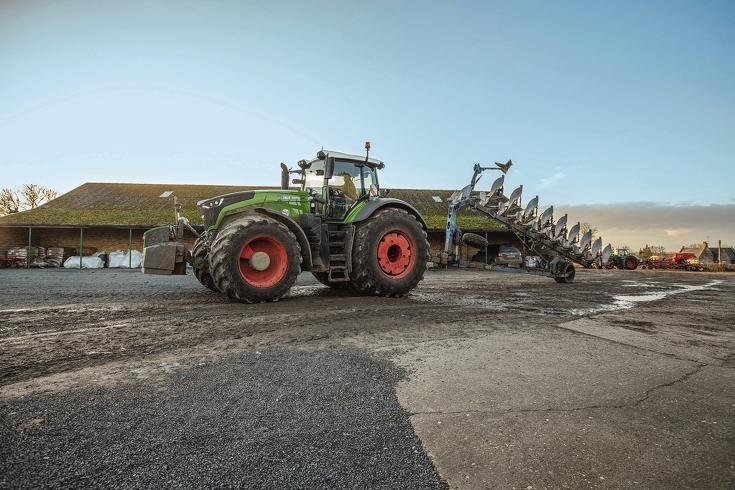
When it comes to implements, the farm uses an 8 m Vaderstad drill and three Lemken ploughs with nine shares, and two with seven shares. “We often have to take the last share off the large plough in winter to make it easier for the 775E,” says Michael Balls, describing the field work. “Our second track tractor turned the soil and did the drill work, the latter was done by an 8 m wide Vaderstad seeder. At the start, I thought we could have stuck with the tracks, and maybe buy a larger articulated machine, but the tests with the 1050 Varios soon changed the whole debate.” Another key argument in favour of the 1050 was the VarioGrip fully-integrated tyre pressure monitoring system. Electronic engine transmission management allows continuously-variable use of high-horsepower tractors, while always providing the power required to maintain the selected speed.
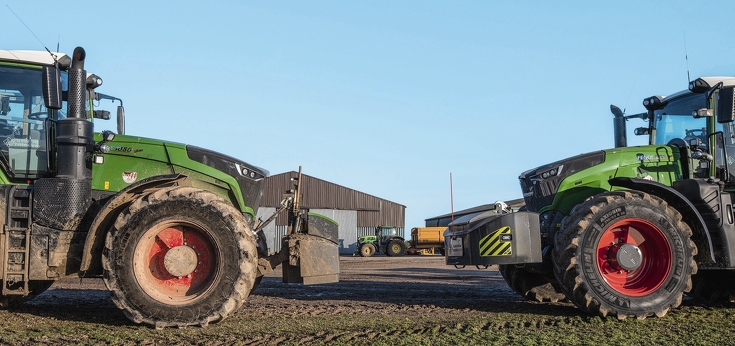
The turning point in favour of the new Fendt high-horsepower tractors came in late autumn 2016, when the local dealer, TNS, put a Fendt 1000 Vario onto the forecourt for demonstration purposes. “We tried out the 500 HP Fendt with a 6 m Simba SLD on oily chalk soil, and off the tractor went with the cultivator”, recalls Michael Balls with a smile. “The track tractors would have had problems due to the slippery ground. Those are not normally the conditions we work in of course, but it showed us that we could extend our working windows if we needed to,” explains Balls. “VarioGrip is the game changer! We had to think out of the box so to speak, and be open to the various options available. Part of the process involves getting our employees on board.”
The two 1000 machines are also used at harvest time for transporting work with trailers whenever the farm’s combine harvesters work in far-flung parts of the farm and the farm needs additional power. “It might seem a bit extreme, using a 500 HP tractor with a cereal trailer, but a 50 km/h fast tractor, which can carry it efficiently on 30 mile round trip, also means that we don’t need to own another tractor. You couldn’t do that with track tractors. With large-wheeled tractors, it is much easier for us for the several days a year when we have to ride with six trailers in convoy.” Michael Balls now wants to reduce the number of machines, to run just two Fendt 1050 Varios and two John Deere tractors this summer. “Reducing the number of traction machines has had a positive impact on our running costs despite the purchase price of the 1000 model”, says the manager positively. “Our long-term plan is to ride the Fendt tractors for up to 8,000 running hours.”
With regard to fuel consumption, he expects few differences to the fuel bill between the Fendt 1050 Vario and the track tractor. “We can’t use the 500 HP without consuming fuel, that’s obvious. We used this tractor change to analyse what we do and how we do it. If we have a bit more power in reserve, we can do more work in the same time – and therefore our costs per hectare fall.” An additional benefit of changing to tyres can be seen on headlands. Here, separate waylines no longer have to be created by the cultivator in order to balance out deeper track grooves on headlands. “We have reduced the soil compaction, and the headland is now completed in one pass, after we have adapted the 8 metre Rapid Lift RL800.”
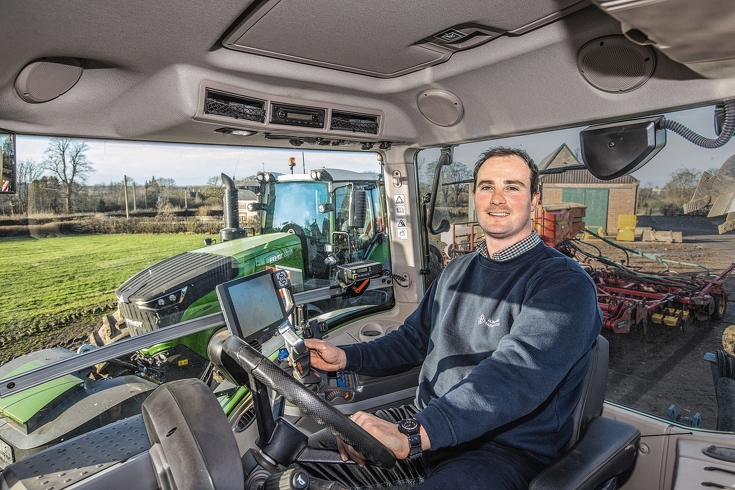
Operators Angus Stuart and Allan Codling were both impressed by the two Fendt tractors. In the brief period from July to autumn 2017, the two Fendt tractors operate for 500 and 700 running hours. Angus Stuart explains: “Compared with a Powershift gearbox, a CVT is a lot more adaptable. In many ways, it’s a big step forward. The 1000 Series power class has a very sophisticated management system for power and traction.” He especially likes the VarioGrip Assistant feature as well as the VarioGrip tyre pressure monitoring system, which he can best use with Michelin AxioBib tyres 900/65 R46 and 710/60 R38.
“Parameters for weights and loads are integrated into the terminal, so that we can make proper use of the power and traction by adjusting the tyre pressure,” he says, describing his settings. “Personally, I tend to set it to 1.6 to 1.8 bar for road transport, and to use 0.9 to 1.1 bar for field work – it all depends of course on what I’m doing and how much ballast the tractor is carrying.” In his experience, it takes some 15 minutes to switch between road and field pressure, all done from the convenience of the cab. In order to reduce non-productive time to a minimum, the tyre pressure is adjusted during the ride at the edge of the field. Hill Farm holds a large selection of weights for the two Fendt tractors, including a 3.3 tonne front-end weight and 1.2 tonne wheel weight. The operating weight can be set to any figure between 16 to 22 tonnes. “It’s easy to change the weights. The tractor surprised me though when I saw what it could do without ballast,” says the operator. “If conditions allow, I’ll try to drill without the front-end weight this season. That would mean that we’re able to work for longer and under conditions that are not ideal.”
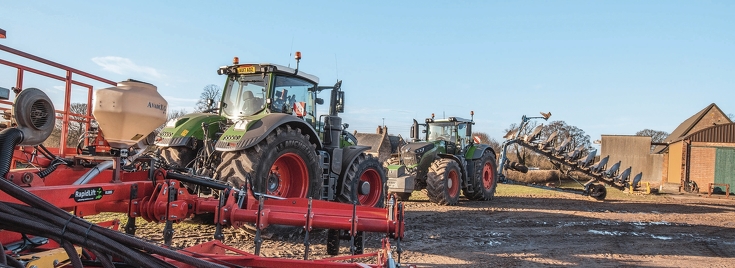
Angus Stuart sees a big difference in comfort and space. “The track tractors were good machines at the time, but there are better alternatives around now. Compared with machines today, they’re loud, clunky and rough, especially on long work days – whereas the Fendt 1050 Vario is physically less stressful and runs much smoother. The 1050 normally runs between 1,200 to 1,400 rpm. I would say that the Fendt is probably the most comfortable tractor I’ve ever sat in,” smiles the experienced operator.